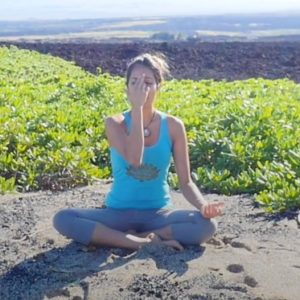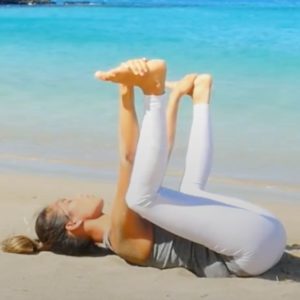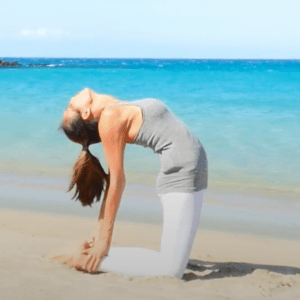Two poses for today are Corpse Pose and Dolphin Plank
Corpse Pose and Dolphin Plank
Corpse Pose – Savasana
This pose gets its name from the recumbent posture of a dead body. It is a position of rest, and is usually practiced towards the end of a yoga session – a session that typically begins with activity and ends in rest; space or pause when deep healing can take place.
Steps – Savasana
- Lie flat on your back, preferably without any props or cushions. Use a small pillow below your neck if required. Close your eyes.
- Keep your legs comfortable apart and let your feet and knees relax completely, toes facing to the sides.
- Place your arms alongside, yet a little spread apart from your body.
- Leave your palms open, facing upward.
- Taking your attention to different body parts one by one, slowly relax your entire body.
- Begin with bringing your awareness to the right foot, move on to the right knee (as you complete one leg, move your attention on to the other leg), and so on, and slowly move upwards to your head, relaxing each part of the body.
- Keep breathing slowly, gently, deeply, and allow your breath to relax you more and more. The incoming breath energizes the body while the outgoing breath brings relaxation. Drop all sense of hurry or urgency or any need to attend to anything else. Just be with the body and the breath.
- Surrender the whole body to the floor and let go. Make sure you don’t fall asleep!
- After some time, about 10-20minutes when you feel fully relaxed, keeping your eyes closed, slowly roll onto your right side. Lie in that position for a minute or so. Then, taking the support of your right hand, gently sit up into a seated pose such as Sukhasana (Easy Pose).
- Keep your eyes closed and take a few deep breaths in and out as you gradually become aware of your environment and the body. When you feel complete, slowly, and gently open your eyes.
Benefits of the Corpse Pose – Savasana
- This posture brings a deep, meditative state of rest, which may help in the repair of tissues and cells, and in releasing stress. It also gives time for the yoga workout to sink in at a deeper level.
- This posture leaves you in a state of rejuvenation. It is the perfect way to end a yoga session, particularly if it has been a fast-paced one.
- It helps reduce blood pressure, anxiety, and insomnia.
- This is an excellent way to ground the body and reduce the Vata dosha(imbalance of the air element) in the body.
Dolphin Plank Pose
Dolphin Plank Pose is an intermediate level rejuvenating yoga posture that helps tones the abdominal muscles. It is a variation of the Dolphin Pose.
Steps
- Begin in Adho Mukha Svanasana and slowly shift the weight of the body to the front.
- Ensure that your shoulders are aligned with your wrists.
- Slowly, lower your arms till the forearms touch the floor. Your palms should be pressed to the floor.
- Keeping your legs straight, position your heels directly above the toes.
- Fix your gaze on the floor and keep your back and knees straight.
- If possible, the palms should be facing each other.
- As you inhale, slowly pull your abdominal muscles in and relax them as you exhale.
- Stay in this posture for a few breaths before returning back to Adho Mukha Svanasana.
Benefits of the Dolphin Plank Pose
- Effectively relives the body of headache, fatigue, and back-ache
- Strengthens the arms and legs
- Tones the abdominal muscles
- Improves digestion
- Relieves menstrual discomfort




